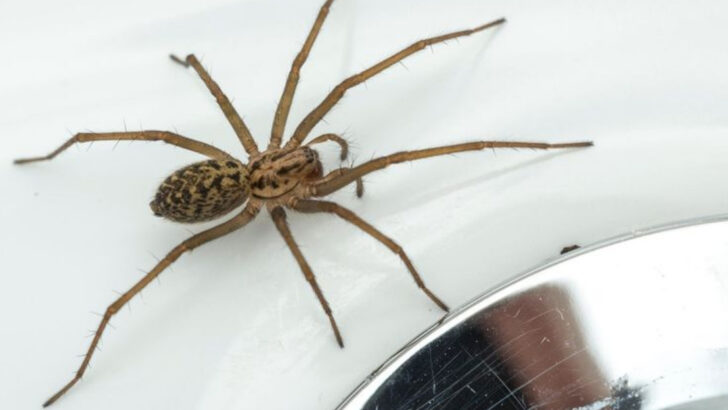Your home might not be as harmless as you think. Some of its creepiest residents come with fangs—and venom.
We’re not talking about jungle spiders or horror movie monsters. These are real, skittering nightmares quietly hiding behind your baseboards, in your closets, or under the sink. And while not every bite is deadly, some of these eight-legged lurkers can send you to the ER in a heartbeat.
Think you’re safe in the suburbs? Think again.
From the infamous brown recluse to lesser-known but just-as-nasty cousins, venomous spiders are more common in American homes than most people realize. And some of them are almost impossible to spot—until it’s too late.
Before you reach into that dark box in the garage, you might want to meet the 17 venomous spiders that could already be living with you. You won’t look at your walls the same way again.
Brown Recluse

The Brown Recluse is a shy spider known for its venomous bite. Found in dark corners, it is often identified by the violin-shaped marking on its back. This spider prefers undisturbed areas, so you might find it in closets or basements.
Despite its dangerous reputation, bites are rare and occur mostly when the spider feels threatened. Its venom can cause tissue necrosis, so medical attention is advisable if bitten.
Interestingly, the Brown Recluse often gives ‘dry bites’, injecting little or no venom as a warning.
Black Widow
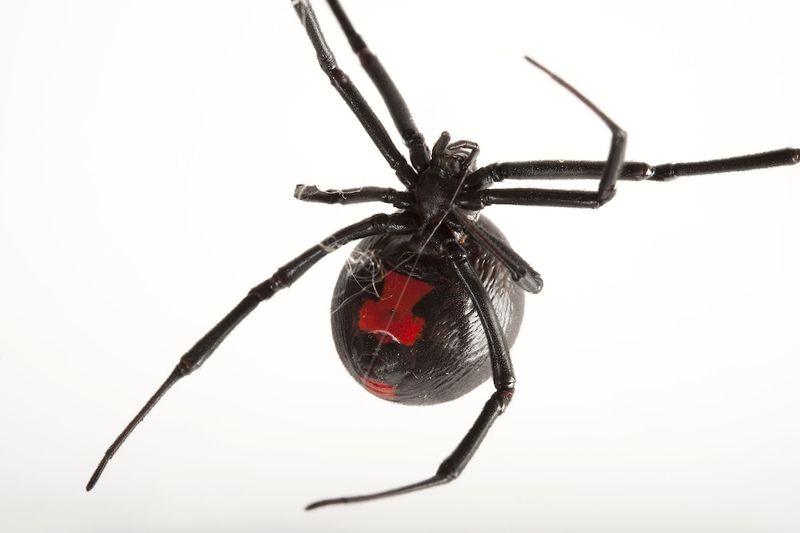
Infamous for its potent venom, the Black Widow is easily recognized by the red hourglass marking on its abdomen. This spider often resides in garages or woodpiles, spinning messy webs.
Females are more venomous than males, and a bite may cause muscle pain and cramps, though it’s rarely fatal.
Interestingly, the Black Widow is not aggressive and bites only in self-defense. If you find one, it’s best to leave it undisturbed or safely relocate it outside.
Hobo Spider
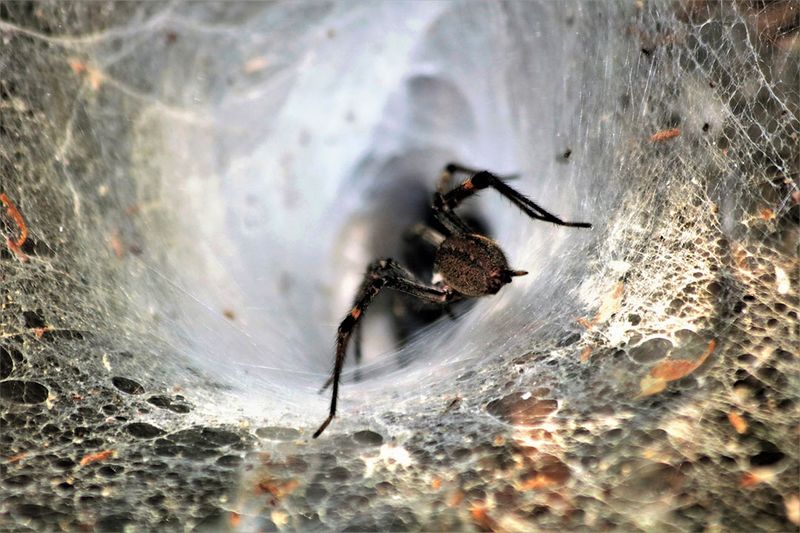
Known as the aggressive house spider, the Hobo Spider is often found in basements or ground-level floors. It constructs funnel-shaped webs where it waits for prey.
The bite of a Hobo Spider may cause mild pain or redness, but it’s often less harmful than other venomous spiders.
Curiously, despite its name, the Hobo Spider is not particularly aggressive toward humans and will usually flee when disturbed.
Yellow Sac Spider

The Yellow Sac Spider is small and can be found wandering on walls and ceilings, especially at night. Its bite is mildly venomous, causing irritation and swelling, but is not life-threatening.
These spiders are often active hunters, not relying on webs to catch prey.
Remarkably, the Yellow Sac Spider plays an important role in controlling pest insect populations, acting as a natural form of pest control in homes.
Wolf Spider
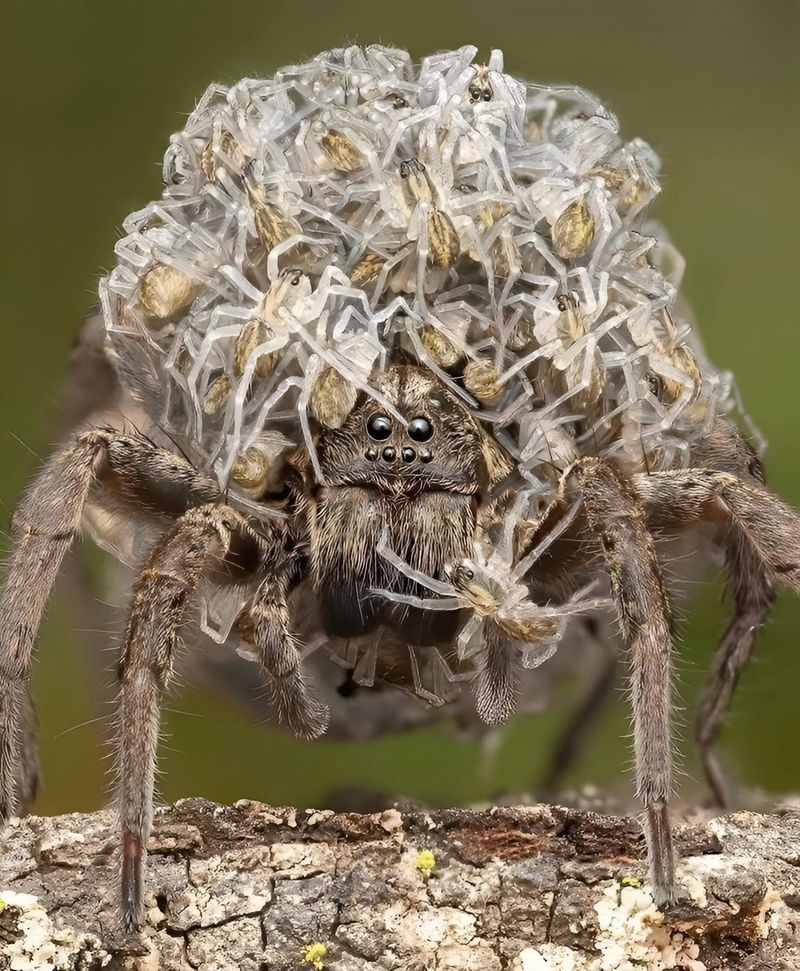
Wolf Spiders are known for their large size and hairy bodies, often seen running on the ground in gardens or basements. Unlike many spiders, they do not spin webs to catch prey, instead relying on their speed and agility.
A bite from a Wolf Spider can be painful but is generally not dangerous to humans.
Fascinatingly, female Wolf Spiders carry their young on their backs until they’re old enough to fend for themselves, showcasing a unique aspect of spider parenting.
Tarantula
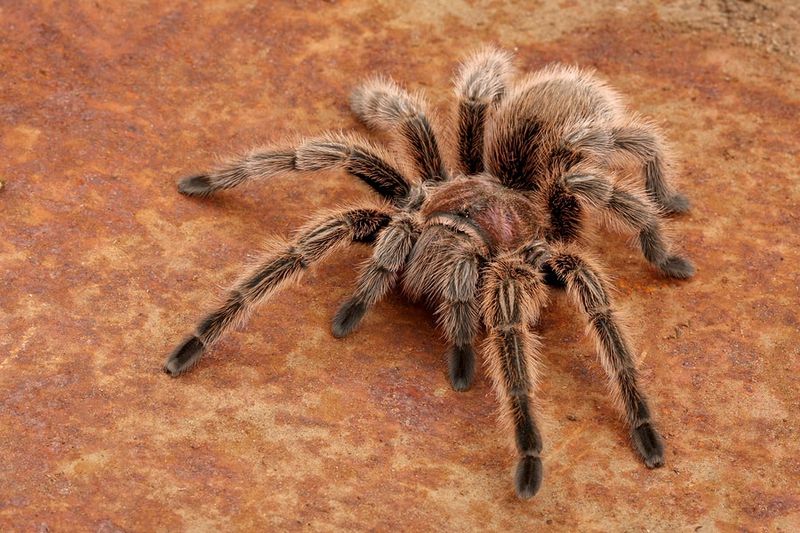
Tarantulas are large, hairy spiders often kept as pets, yet they can also be found in some American homes, especially in southwestern states. They are slow-moving and generally docile, with bites that are painful but not medically significant.
Interestingly, Tarantulas can flick urticating hairs from their abdomen as a defense mechanism, causing irritation to potential predators.
Despite their intimidating appearance, Tarantulas are often appreciated for their calm demeanor and unique behaviors.
Jumping Spider
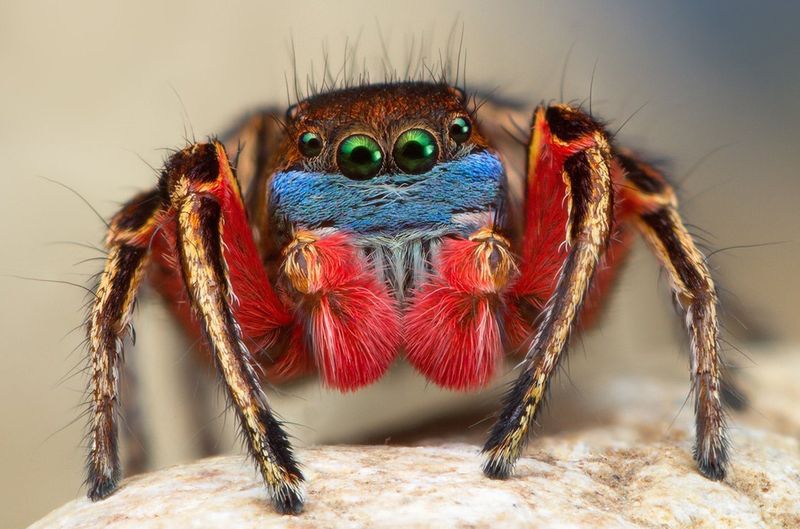
Jumping Spiders are small, agile hunters known for their vivid colors and excellent eyesight. They do not rely on webs, instead pouncing on their prey.
While their bites are venomous to insects, they pose little threat to humans, often resulting only in minor irritation.
With over 5,000 species, these spiders are incredibly diverse, and their curious nature makes them popular among spider enthusiasts. Their ability to jump long distances relative to their body size is truly remarkable.
House Spider

The House Spider is perhaps the most familiar arachnid found in homes across America. These small spiders weave messy webs in corners and are often seen as harmless cohabitants.
Their bites are mild and rarely cause significant reaction, making them more of a nuisance than a threat.
Interestingly, House Spiders play a crucial role in reducing insect populations indoors, acting as a natural pest control agent.
Orb Weaver
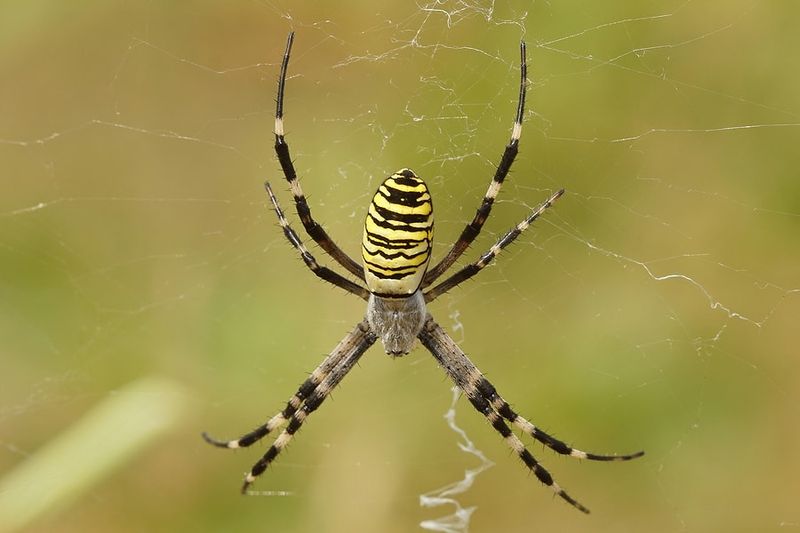
Orb Weavers are known for creating large, symmetrical webs that can often be seen in gardens or near outdoor lights. Their intricate designs are not only beautiful but highly effective at catching prey.
Although they possess venom, it’s not harmful to humans and is mainly used to immobilize insects.
These spiders are gentle giants, admired for their architectural prowess and contribution to controlling insect populations. Their presence in the garden is usually more a curiosity than a concern.
Cellar Spider
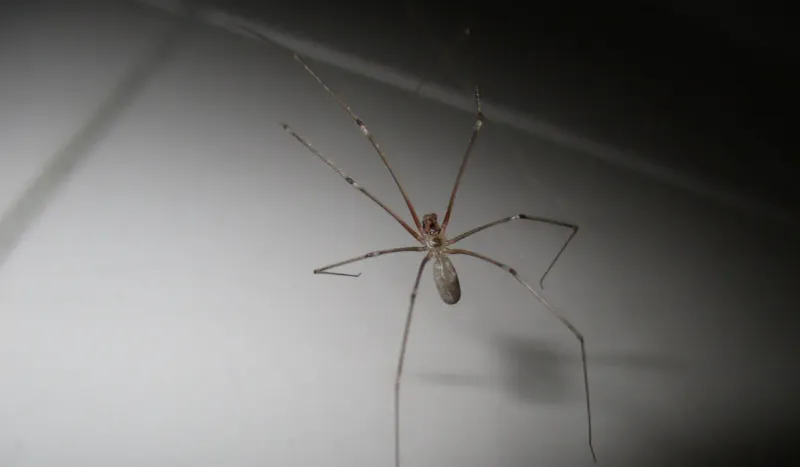
Often mistaken for daddy longlegs, Cellar Spiders are recognized by their very long, thin legs and fragile bodies. They prefer dark, damp areas like basements or cellars.
Their venom is harmless to humans, but they are effective hunters of other spiders and insects.
Interestingly, Cellar Spiders are known to vibrate rapidly in their webs when disturbed, a behavior thought to confuse predators or potential threats.
Garden Spider
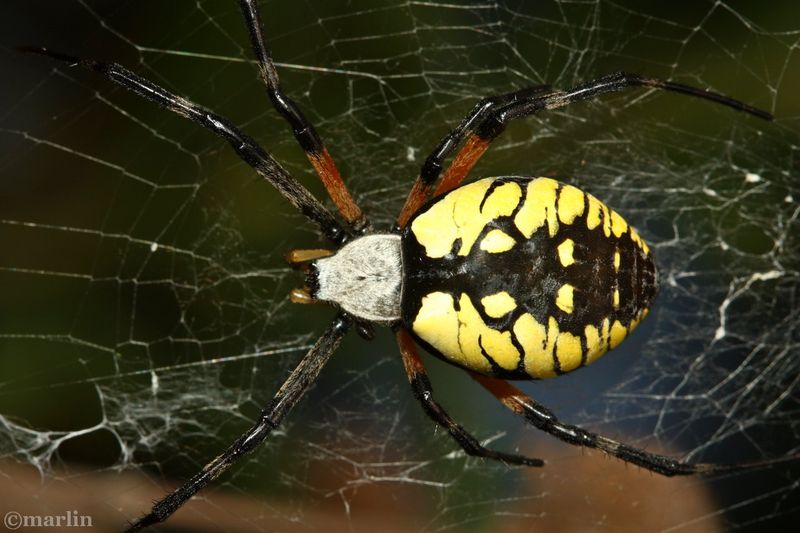
The Garden Spider, with its striking black and yellow markings, spins impressive webs in gardens and around outdoor structures. It relies on these webs to catch flying insects.
Though they have venom, it’s not dangerous to humans, and their bite is akin to a bee sting.
Garden Spiders are admired for their striking appearance and their role in controlling garden pests, often becoming a familiar sight in late summer and early fall.
Mouse Spider
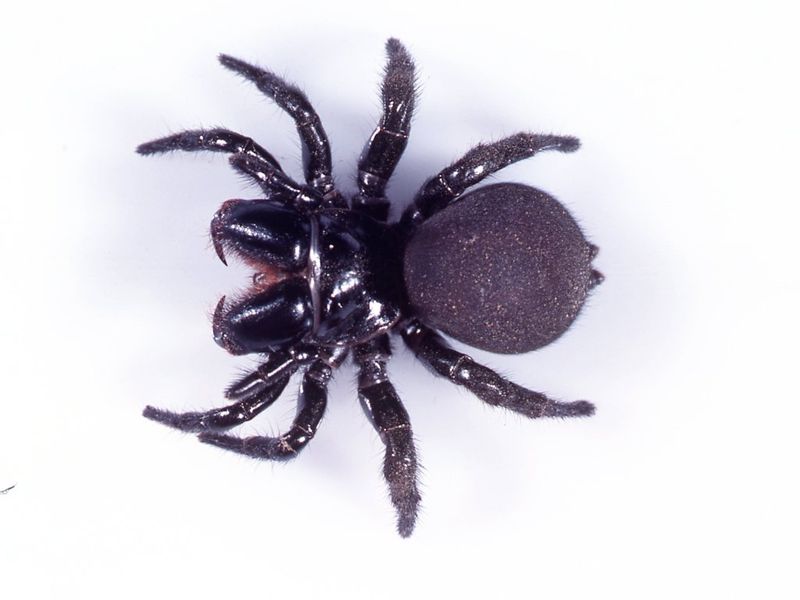
Mouse Spiders are known for their robust build and shiny black bodies, often mistaken for funnel-web spiders. They prefer burrows in well-drained areas, sometimes found in suburban gardens.
While they possess medically significant venom, bites are rare, as these spiders are generally non-aggressive.
Interestingly, Mouse Spiders have been observed to play dead when threatened, a behavior that may deter predators.
Trapdoor Spider
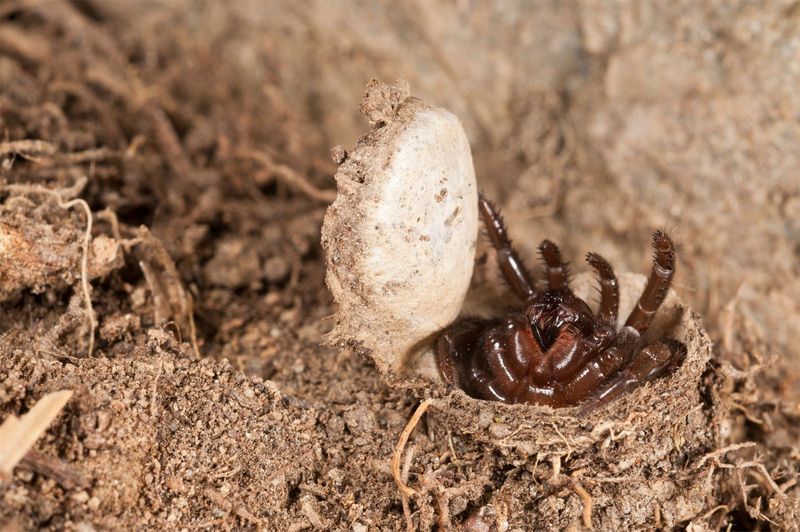
Trapdoor Spiders are elusive creatures, known for their underground burrows with a silk-lined trapdoor. Found in gardens or wooded areas, they are skilled ambush predators.
Their venom is not dangerous to humans, but their bite can be painful.
Remarkably, Trapdoor Spiders can remain motionless for long periods, waiting for unsuspecting prey to pass by their hidden lairs.
Fishing Spider

Fishing Spiders are unique for their ability to hunt on water surfaces, often found near ponds or streams. They use their long legs to sense vibrations, capturing small fish and insects.
Their venom is not harmful to humans but helps immobilize aquatic prey.
These spiders are a marvel of adaptation, showcasing how diverse and specialized spider hunting techniques can be. Their presence near water is a testament to their evolutionary success.
Ghost Spider

Ghost Spiders, with their pale, translucent bodies, are often seen in homes, especially on white walls or ceilings. Their subtle tones aid in camouflage.
While venomous to insects, their bite is harmless to humans.
Curiously, Ghost Spiders are adept hunters, preferring to stalk rather than trap their prey in webs. Their spectral appearance adds an air of mystery to their presence in homes.
Zebra Spider
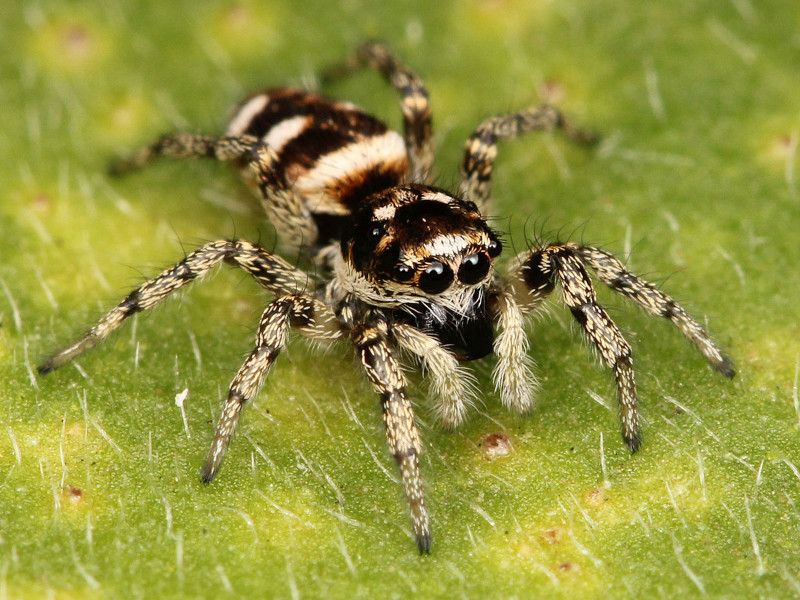
Zebra Spiders are small but striking, easily identified by their black and white stripes. They are common in urban areas, often spotted on window sills or walls.
Their venom is not dangerous to humans, and they are known for their jumping prowess, leaping distances many times their body length to catch prey.
Zebra Spiders capture the imagination with their bold patterns and agile movements, making them a favorite among spider enthusiasts.
Arizona Brown Spider
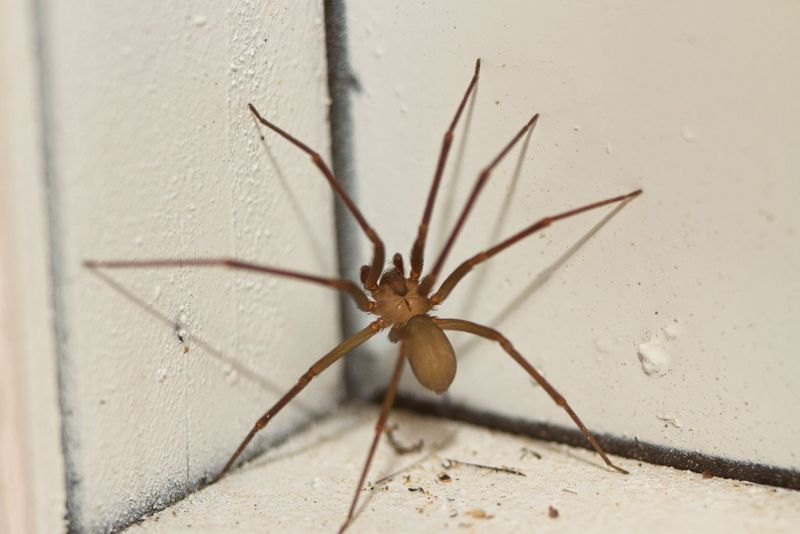
Imagine encountering the Arizona Brown Spider, a close relative of the infamous Brown Recluse. Found in the southwestern United States, this spider sports a distinct violin-shaped mark on its back. Its nocturnal nature means it often goes unnoticed, hiding in dark corners.
Despite its small size, the Arizona Brown Spider’s venom can cause significant skin damage. Its bite may initially go unnoticed, but symptoms can escalate, leading to severe reactions in some cases.
Interestingly, this spider prefers solitude, avoiding human contact whenever possible. Always exercise caution when cleaning storage areas or attics where it might reside.

